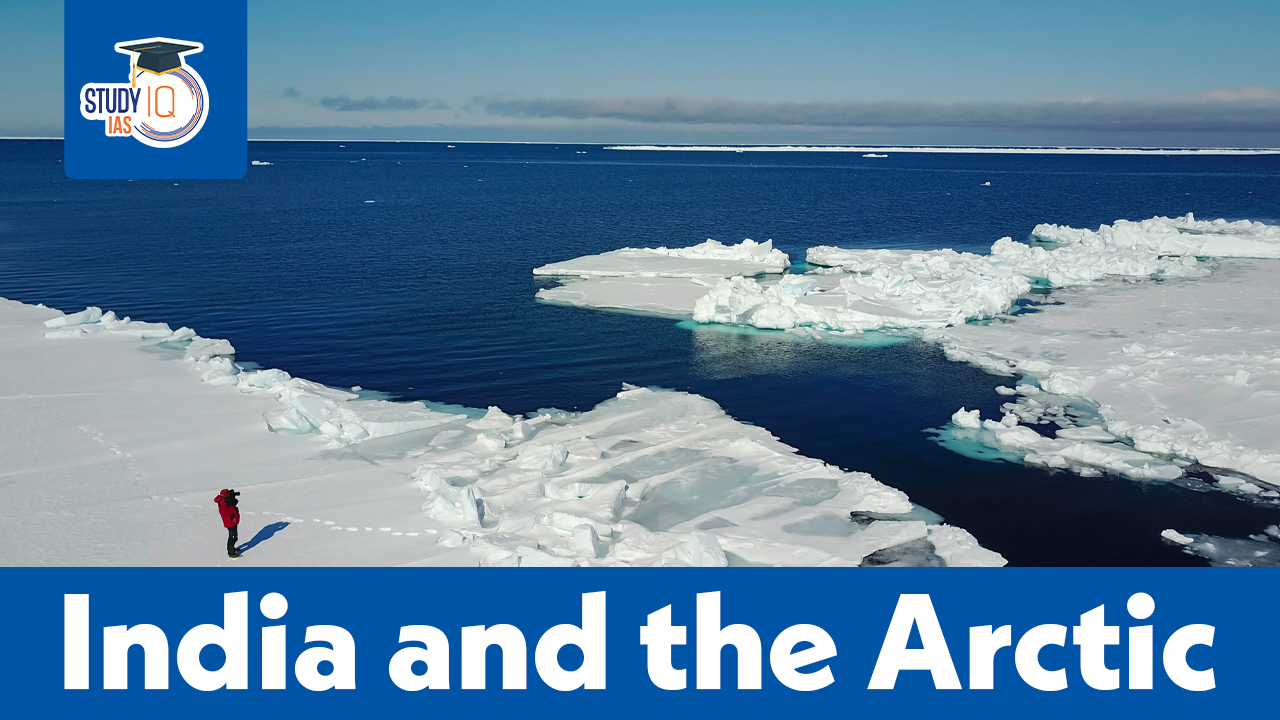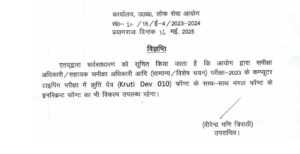Table of Contents
Context: Murmansk, popularly called the capital of the Arctic region and the beginning point of the Northern Sea Route (NSR), is witnessing the rising trend of Indian involvement in cargo traffic.
More on News
- In the first seven months of 2023, India got a significant share with 35% of eight million tonnes of cargo handled by the Murmansk port.
- India has been showing greater interest regarding the NSR for a number of reasons.
Murmansk Port
- Murmansk is a seaport located on the eastern shore of the Kola Bay of the Barents Sea in the city of Murmansk, Russia.
- It is located about 2,000 km northwest of Moscow.
- The Barents Sea is a marginal sea of the Arctic Ocean. It is located along the northern coasts of Norway and Russia.
- The port ranks fourth in Russia in terms of processed goods and is the second-largest port in northwest Russia (after the port of St. Petersburg).
- Other important ports along the Arctic coast include Arkhangelsk in Russia, Nuuk in Greenland, and Churchill in Canada.
- The port is navigated all year round. The dimensions of vessels calling at the port of Murmansk are not limited.

India and the Arctic
Historical Background:
- India’s engagement with the Arctic began when it signed the Svalbard Treaty in February 1920 in Paris between Norway, the US, Denmark, France, Italy, Japan, the Netherlands, Great Britain, and Ireland, and the British overseas Dominions and Sweden concerning Spitsbergen.
- Ever since then, India has been closely monitoring all the developments in the Arctic region.
- India initiated its Arctic research program in 2007 with the objective of studying teleconnections between Arctic climate and Indian monsoon, to characterize sea ice in the Arctic using satellite data, to estimate the effect on global warming.
- India already has a research station in the Arctic, Himadri, for research purposes.
- Apart from Himadri, in 2008, the country launched its inaugural multi-sensor moored observatory and northernmost atmospheric laboratory in 2014 and 2016 respectively.
- Till last year, thirteen expeditions to the Arctic were successfully conducted.
- In May 2013, India became an observer-State of the Arctic Council along with five others including China.
Arctic Council:
- The Arctic Council is a high-level intergovernmental body set up in 1996 by the Ottawa declaration to promote cooperation, coordination and interaction among the Arctic States together with the indigenous communities and other Arctic inhabitants.
- It promotes research and facilitates cooperation among Arctic countries on issues related to the environmental protection and sustainable development of the Arctic region.
- The Council has the eight circumpolar countries as member states and is mandated to protect the Arctic environment and promote the economies and social and cultural well-being of the indigenous people whose organizations are permanent participants in the council.
- Arctic Council Secretariat: The standing Arctic Council Secretariat formally became operational in 2013 in Tromsø, Norway.
- The Council has members, ad hoc observer countries and “permanent participants”
- Members of the Arctic Council: Ottawa Declaration declares Canada, the Kingdom of Denmark, Finland, Iceland, Norway, the Russian Federation, Sweden and the United States of America as a member of the Arctic Council.
- Observer status: It is open to non-Arctic states, along with inter-governmental, inter-parliamentary, global, regional and non-governmental organizations that the Council determines can contribute to its work.
- India holds one of the 13 positions as the Observer in the Arctic Council.

What is the Arctic Region and how is it significant for India?
- The Arctic is a polar region located at the northernmost part of Earth.
- It consists of the Arctic Ocean, adjacent seas, and parts of Alaska (United States), Canada, Finland, Greenland (Denmark), Iceland, Norway, Russia, and Sweden.
- The region is home to almost four million inhabitants, of which, about one-tenth are indigenous people and the land within the Arctic region has seasonally varying snow and ice cover.
- These countries together form the core of the Arctic Council.

Significance
- The vulnerability of the Arctic region, which is above the Arctic Circle and includes the Arctic Ocean with the North Pole at its centre, to unprecedented changes in the climate may have an impact on India in terms of economic security, water security and sustainability.
- The region also constitutes the largest unexplored prospective area for hydrocarbons remaining on the Earth.
- It is estimated that the region may hold over 40 per cent of the current global reserves of oil and gas and could hold significant reserves of coal, zinc and silver.
- The Arctic region is significant due to the shipping routes that run through it.
- The region holds immense geopolitical importance as the Arctic is projected to be ice-free by 2050 and world powers making a beeline to exploit the region rich in natural resources.
- According to the Ministry of External Affairs, India can play a constructive role in securing a stable Arctic.
- The government’s Arctic Policy of 2022 mentions that the country’s approach to economic development of the region is guided by UN Sustainable Development Goals.
India’s Arctic Policy
The Ministry of Earth Science unveiled India’s Arctic Policy, titled ‘India and the Arctic: building a partnership for sustainable development’ in 2022.
Provisions and Objectives:
- Six Central Pillars:
- Science and research.
- Environmental protection.
- Economic and human development.
- Transportation and connectivity.
- Governance and international cooperation.
- National capacity building.
- Objectives:
- It aims to strengthen national capabilities and competencies in science and exploration, climate and environmental protection, maritime and economic cooperation with the Arctic region.
- It seeks to strengthen institutional and human resource capacities within the government and academic, research and business institutions through inter-ministerial coordination in pursuit of India’s interests in the Arctic.
- It seeks to enhance understanding of the impact of climate change in the Arctic region on India’s climate, economic and energy security.
- It aims to promote better analysis, prediction and coordinated policymaking on the implications of ice melting in the Arctic on India’s economic, military and strategic interests related to global shipping routes, energy security and exploitation of mineral wealth.
- It seeks to study the linkages between polar regions and the Himalayas and deepen the cooperation between India and the countries of the Arctic region under various Arctic forums, drawing expertise from scientific and traditional knowledge.
- The policy also seeks to increase India’s participation in the Arctic Council and improve understanding of the complex governance structures in the Arctic, relevant international laws and geopolitics of the region.
India and the North Sea Route
- The Northern Sea Route (NSR) is a shipping route that stretches across the Arctic Ocean, connecting Europe with countries in the Asia-Pacific region.
- It spans approximately 5,600 kilometers and passes through four seas of the Arctic Ocean.
- The route begins at the boundary between the Barents and Kara Seas (Kara Strait) and ends at the Bering Strait (Provideniya Bay).
- One of the key advantages of the NSR is its potential to significantly shorten the shipping distance between Europe and Asia, potentially reducing transit times and costs.
Making the NSR Navigable
- The NSR becomes navigable due to the icebreaking assistance provided to ensure safe passage for vessels.
- Russia plays a significant role in making the NSR navigable, primarily because the Arctic Ocean’s waters remain icebound for most of the year.
- Russia is unique in having a fleet of nuclear-powered icebreakers, which are crucial for breaking through the ice and creating safe routes for ships.
- The world’s first nuclear icebreaker, “Lenin,” was put into operation by Russia in 1959.
- Today, Rosatom’s subsidiary, FSUE Atomflot, operates a fleet of nuclear-powered icebreakers, along with other vessels.
- This fleet ensures that the NSR remains operational for an extended shipping season.

Driving Factors for India’s Participation in NSR Development
India’s interest in the development of the Northern Sea Route is driven by several factors:
- Cargo Traffic Growth: The cargo traffic along the NSR has been increasing consistently, with significant growth rates. This presents an opportunity for India to leverage this route for its imports and exports.
- Energy Resource Imports: India’s increasing imports of crude oil and coal from Russia have created a strong incentive to utilize the NSR. The route offers a reliable and efficient transport option for these energy resources.
- Geographical Advantage: India’s geographical location and its reliance on sea transportation make the NSR an attractive option to explore. The route’s potential for reducing transit times can benefit India’s trade relations.
- Chennai-Vladivostok Maritime Corridor (CVMC) Project: The CVMC project, a bilateral initiative between India and Russia, seeks to establish a maritime corridor connecting Chennai and Vladivostok. This corridor aims to significantly reduce transport time for goods between the two countries by utilizing the NSR.
- Strategic Considerations: The possibility of China and Russia gaining collective influence over the NSR has strategic implications. India’s participation could help ensure its interests are represented in the evolving dynamics of the region.
- Future Developments: Russia’s NSR development plan, approved until 2035, sets ambitious cargo traffic targets for 2024 and 2030. The plan aligns with Russia’s efforts to make the NSR a prominent route for international shipping. Despite economic sanctions, Russia continues to prioritize the NSR’s development.


 UPPSC RO ARO Exam Date 2025 Out: Typing ...
UPPSC RO ARO Exam Date 2025 Out: Typing ...
 Maharashtra Bill to Curb Urban Naxalism,...
Maharashtra Bill to Curb Urban Naxalism,...
 International Maize and Wheat Improvemen...
International Maize and Wheat Improvemen...





















